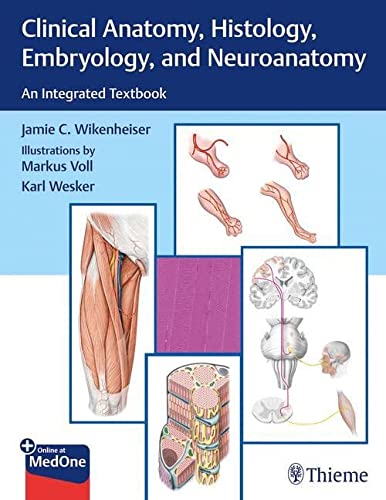

Most ebook files are in PDF format, so you can easily read them using various software such as Foxit Reader or directly on the Google Chrome browser.
Some ebook files are released by publishers in other formats such as .awz, .mobi, .epub, .fb2, etc. You may need to install specific software to read these formats on mobile/PC, such as Calibre.
Please read the tutorial at this link. https://ebooknice.com/page/post?id=faq
We offer FREE conversion to the popular formats you request; however, this may take some time. Therefore, right after payment, please email us, and we will try to provide the service as quickly as possible.
For some exceptional file formats or broken links (if any), please refrain from opening any disputes. Instead, email us first, and we will try to assist within a maximum of 6 hours.
EbookNice Team

Status:
Available4.7
14 reviewsClinical Anatomy, Histology, Embryology, and Neuroanatomy: An Integrated Textbook by Jamie C. Wikenheiser bridges all four anatomical sciences in one volume with clinically focused anatomical text and exceptional illustrations. The book fills a gap in the literature, serving as a one-stop resource for multiple courses and board-review preparation, and also provides an invaluable reference for professional practice. The primary goals of integrating the four sciences into one book are to enhance students' understanding of the subject matter, better prepare them for national exams, and—most importantly—enable them to deliver optimal care to their future patients.
The introductory chapter includes clear explanations of anatomical terminology and an overview describing all systems of the body. The rest of the textbook is organized by region to better align with how most professional schools organize their curriculums, while also providing flexibility to fit alternate curriculums. Chapters on the Back, Thorax, Abdomen, Pelvis and Perineum, Lower Extremity, Upper Extremity, and Head and Neck regions are followed by multiple chapters focused on neuroanatomy. Region-based chapters with multiple organs begin with an introduction to gross anatomy, followed by descriptions of the associated neurovasculature and lymphatic drainage. Development and the histology of organs are presented alongside the neurovasculature.